There is only one element I don’t want here in this jumble of life that is suddenly, surprisingly beautiful to me. Except sometimes I do want it, when the autism augments the good of who my daughter is without adding to her misery, that same misery we all know in one way or another during this life between Edens. What I want is for the autism to diminish, and if it can’t do that in her bodily experience, then at least it can grow smaller within the space it takes up in my imagining and understanding of this wonderful girl. I don’t yet know how to relegate it to its proper place, but I am hopeful. If my favorite house is the messy one now, then I can change and grow, too.
All in Artful Kids
Tell Me a Story
We can never overestimate the value of listening to someone’s story, for it takes great courage to share a hurt or even a joy with another person. The fear of rejection, misunderstanding, or criticism often keeps us from telling someone what has made us who we are. But when another person takes the time to sit with us and listen to what we have lived, our hearts grow stronger.
 Though it shook her, Una loved the book. In fact she turned around and read it again straight through. I wanted to ask about it, but tried to give her space. I wondered how she experienced the story; I wondered at the contours of her approach toward, and immersion in, this particular encounter—with the characters, the tragedy, and ultimately with her own mortality.
Though it shook her, Una loved the book. In fact she turned around and read it again straight through. I wanted to ask about it, but tried to give her space. I wondered how she experienced the story; I wondered at the contours of her approach toward, and immersion in, this particular encounter—with the characters, the tragedy, and ultimately with her own mortality.
 Where was the mystery I’d felt as a child, the anticipation and excitement? The flicker of hope in the candlelight of our Christmas Eve vigil? In the midst of stockpiling my childhood traditions of Christmas joy and imposing them on the life of my new immediate family, I seemed to have signed up for more than my spirit could handle.
Where was the mystery I’d felt as a child, the anticipation and excitement? The flicker of hope in the candlelight of our Christmas Eve vigil? In the midst of stockpiling my childhood traditions of Christmas joy and imposing them on the life of my new immediate family, I seemed to have signed up for more than my spirit could handle.
And then Peter began collecting little things.
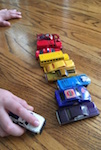 Young children naturally explore who they are and what their world is by spending their time wondering and discovering the world through the joy of play. I learned about friendship, nature, and my small town Ohio world in my hours of play with my friend Kim, and those memories have inspired me to give my own children time and opportunity to imagine and wonder without my interference. The mystery and magic of the benefits of play must be experienced as a child, and if a little water and mud are mixed into the process, then it’s even better.
Young children naturally explore who they are and what their world is by spending their time wondering and discovering the world through the joy of play. I learned about friendship, nature, and my small town Ohio world in my hours of play with my friend Kim, and those memories have inspired me to give my own children time and opportunity to imagine and wonder without my interference. The mystery and magic of the benefits of play must be experienced as a child, and if a little water and mud are mixed into the process, then it’s even better.
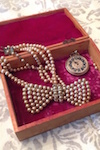 As I interact with children of every age, I am convinced the one common thread to maintaining a child’s natural curiosity is that we allow them to be explorers. And most of the time, exploration looks like play. Play remains the most valuable learning tool children use, and they never tire of it. As children play, they collaborate, problem-solve, wonder, discover, risk failure and learn to persevere.
As I interact with children of every age, I am convinced the one common thread to maintaining a child’s natural curiosity is that we allow them to be explorers. And most of the time, exploration looks like play. Play remains the most valuable learning tool children use, and they never tire of it. As children play, they collaborate, problem-solve, wonder, discover, risk failure and learn to persevere.
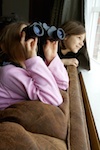 180 days. Four hours of instructional time per day. These are the only requirements dictated by the state of Tennessee. I was free to use curriculum or not to use curriculum. I could test or not. Unschooling appealed to me because it felt more sustainable; without a rigid plan I would be less likely to burn out. Even if it didn’t work, one year of unschooling wouldn’t kill us. And maybe it would be exactly what we needed to recalibrate and de-stress.
180 days. Four hours of instructional time per day. These are the only requirements dictated by the state of Tennessee. I was free to use curriculum or not to use curriculum. I could test or not. Unschooling appealed to me because it felt more sustainable; without a rigid plan I would be less likely to burn out. Even if it didn’t work, one year of unschooling wouldn’t kill us. And maybe it would be exactly what we needed to recalibrate and de-stress.
 When we tell our struggle and pain and joy and even what makes us laugh, we know more deeply who we are. And we know more deeply who each other is. We all need listeners, intellectual stretchers, confidants, energetic people, angels, spiritual guides, and helpers in our lives. Because we need belonging. It is difficult to create an environment of belonging for a child if you don’t feel like you belong anywhere. So find someone who listens, and tell your story. Let yourself be known. Once you have a powerful sense of belonging, you can’t help but begin to create that wherever you are.
When we tell our struggle and pain and joy and even what makes us laugh, we know more deeply who we are. And we know more deeply who each other is. We all need listeners, intellectual stretchers, confidants, energetic people, angels, spiritual guides, and helpers in our lives. Because we need belonging. It is difficult to create an environment of belonging for a child if you don’t feel like you belong anywhere. So find someone who listens, and tell your story. Let yourself be known. Once you have a powerful sense of belonging, you can’t help but begin to create that wherever you are.
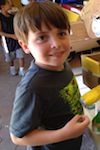 For every moment I paid attention, I wonder how many moments I missed — not just with the children around me, but also with the adults I interact with who might have needed an encouraging word or simply a friend who would listen. Maybe being a hero doesn’t require superhuman abilities, but simply the willingness to pause and pay attention and listen.
For every moment I paid attention, I wonder how many moments I missed — not just with the children around me, but also with the adults I interact with who might have needed an encouraging word or simply a friend who would listen. Maybe being a hero doesn’t require superhuman abilities, but simply the willingness to pause and pay attention and listen.
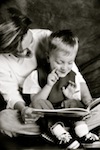 From our hastily packed bag, I pulled out the tattered green copy of the book we had been reading as a family. Curled up tightly on the hospital bed next to my pale, tired boy, I flicked through the yellowed pages to find our place. Yes, that was it. A pile of neatly arranged feathers, topped with two carefully crossed crow’s feet and a beak, had been found in the center of the barnyard. Jinx the cat had been framed. As we read together in that hospital bed, what took place was a holy alchemy. Ordinary words on paper were transformed into extraordinary glimpses of hope.
From our hastily packed bag, I pulled out the tattered green copy of the book we had been reading as a family. Curled up tightly on the hospital bed next to my pale, tired boy, I flicked through the yellowed pages to find our place. Yes, that was it. A pile of neatly arranged feathers, topped with two carefully crossed crow’s feet and a beak, had been found in the center of the barnyard. Jinx the cat had been framed. As we read together in that hospital bed, what took place was a holy alchemy. Ordinary words on paper were transformed into extraordinary glimpses of hope. I realized I wasn’t teaching these tiny people how to use their imaginations or how to be creative because they already were practically brimming over with innate curiosity. They were being who they were born to be — curious people. And if they were born like that, then surely I was, too. Over the years of working with children I learned to learn from them, and in the process, I have learned about myself.
I realized I wasn’t teaching these tiny people how to use their imaginations or how to be creative because they already were practically brimming over with innate curiosity. They were being who they were born to be — curious people. And if they were born like that, then surely I was, too. Over the years of working with children I learned to learn from them, and in the process, I have learned about myself.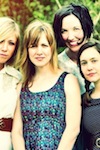 A wise and wonderful editor of mine once told me that she believes there are two types of children's book writers: those who study children and those who are children inside. I knew immediately which group I belong in! It just feels very natural for me to write for children. And I feel very fortunate: children are the best audience in the world. They will go with you anywhere, much further than adults. It is an honor and a privilege to write for children, and also, of course, a great responsibility.
A wise and wonderful editor of mine once told me that she believes there are two types of children's book writers: those who study children and those who are children inside. I knew immediately which group I belong in! It just feels very natural for me to write for children. And I feel very fortunate: children are the best audience in the world. They will go with you anywhere, much further than adults. It is an honor and a privilege to write for children, and also, of course, a great responsibility.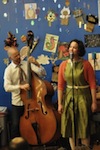 What we believe about a child, and the person who that child is becoming, is significant. As Charlotte Mason says, "A child is a person." Children are not just babies becoming people, they are already people. In this way, we hold and relate to them with honor and respect. On one hand, we don't need to idolize them in preciousness. Nor do we need to belittle them for their weakness.
What we believe about a child, and the person who that child is becoming, is significant. As Charlotte Mason says, "A child is a person." Children are not just babies becoming people, they are already people. In this way, we hold and relate to them with honor and respect. On one hand, we don't need to idolize them in preciousness. Nor do we need to belittle them for their weakness.
This reality is a great equalizer, and it makes me want to consider that honor even in the hope that the simple songs they sing and memorize should also be great songs.
 I’m dumbfounded. My preliterate preschooler is turning into a little journalist, and I have no idea why. When she sees me with scraps of paper, it is more often to make a grocery list than anything else, which she’s at least mildly aware of since I always start my list by asking, “Lily, what should we get from the grocery store?” To which she replies something like, “Cereal, strawberries, and chocolate.” I’d like to think that it’s the writer in me that has somehow projected the importance of literacy to my child and she’s absorbing my love of the written word, but I don’t think that’s it.
I’m dumbfounded. My preliterate preschooler is turning into a little journalist, and I have no idea why. When she sees me with scraps of paper, it is more often to make a grocery list than anything else, which she’s at least mildly aware of since I always start my list by asking, “Lily, what should we get from the grocery store?” To which she replies something like, “Cereal, strawberries, and chocolate.” I’d like to think that it’s the writer in me that has somehow projected the importance of literacy to my child and she’s absorbing my love of the written word, but I don’t think that’s it. Just behind me, all of the sprouts for our garden lean towards the sunlight and serve as yet another reminder of new life. Surrounded by gifts of life, light, growth, beauty, feast, story, and love, I sit down. I pause. I wait and I color these tiny Lenten pictures. When I steal away for a few minutes to color, I feel myself wanting to savor the project, and I work with a purposeful slowness, hoping the exercise will be one that lasts much longer than I know it will.
Just behind me, all of the sprouts for our garden lean towards the sunlight and serve as yet another reminder of new life. Surrounded by gifts of life, light, growth, beauty, feast, story, and love, I sit down. I pause. I wait and I color these tiny Lenten pictures. When I steal away for a few minutes to color, I feel myself wanting to savor the project, and I work with a purposeful slowness, hoping the exercise will be one that lasts much longer than I know it will. I don't mean to satirize mom blogs. As an artist, I live to create beauty and to breathe it in, and I am often inspired by these creative mamas. Neither do I condemn the blogging mamas themselves. After all, I am one of them. I'm no celebrity, but I have definitely projected — through my blog and through my posts — a picture of a beautiful life. I am only suggesting that we think twice about the standard we create when we post only the good stuff.
I don't mean to satirize mom blogs. As an artist, I live to create beauty and to breathe it in, and I am often inspired by these creative mamas. Neither do I condemn the blogging mamas themselves. After all, I am one of them. I'm no celebrity, but I have definitely projected — through my blog and through my posts — a picture of a beautiful life. I am only suggesting that we think twice about the standard we create when we post only the good stuff.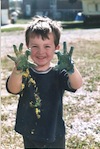 You may have little boys in your life who love to sit and draw, paint and create, and I’ve known many of these delightful boys over the years. But I find great joy in the scrambling bursts of energy and emotion that wild boys bring to my life and to the art room. Finding an art project that engages the heart and mind of a child, and especially a little boy, is like glimpsing a perfect moment of how God intended for us to live.
You may have little boys in your life who love to sit and draw, paint and create, and I’ve known many of these delightful boys over the years. But I find great joy in the scrambling bursts of energy and emotion that wild boys bring to my life and to the art room. Finding an art project that engages the heart and mind of a child, and especially a little boy, is like glimpsing a perfect moment of how God intended for us to live. His painting consisted of red and blue brushstrokes across the bottom of the paper, because that was as high as he could reach. I saved the painting in a plastic bin somewhere in his bedroom closet: not a particularly beautiful painting, definitely not an important subject, but it is significant. It marks a few moments in which my son wondered about paint.
His painting consisted of red and blue brushstrokes across the bottom of the paper, because that was as high as he could reach. I saved the painting in a plastic bin somewhere in his bedroom closet: not a particularly beautiful painting, definitely not an important subject, but it is significant. It marks a few moments in which my son wondered about paint. For me, pressing my brush against a canvas shakes the snow globe of monotony. It’s how I process this season of life and refill my cup. More than that, it’s the way I etch toward beauty, contemplate truth, and lasso the wayward bits of myself so I have more to give to the people I love.
For me, pressing my brush against a canvas shakes the snow globe of monotony. It’s how I process this season of life and refill my cup. More than that, it’s the way I etch toward beauty, contemplate truth, and lasso the wayward bits of myself so I have more to give to the people I love. My son Adrian, our oldest of four children, is a talented singer-songwriter and musician. I say this with as much objectivity as I can muster, for it would be easier if he wasn’t so good. I carry with me all the broken promises, misplaced optimism, wishful thinking, and bull-headed stubbornness that thirty-odd years in the music business doles out. Without a doubt, I also had some signature moments of my life, but what weighs more: the successes or the struggles?
My son Adrian, our oldest of four children, is a talented singer-songwriter and musician. I say this with as much objectivity as I can muster, for it would be easier if he wasn’t so good. I carry with me all the broken promises, misplaced optimism, wishful thinking, and bull-headed stubbornness that thirty-odd years in the music business doles out. Without a doubt, I also had some signature moments of my life, but what weighs more: the successes or the struggles?















